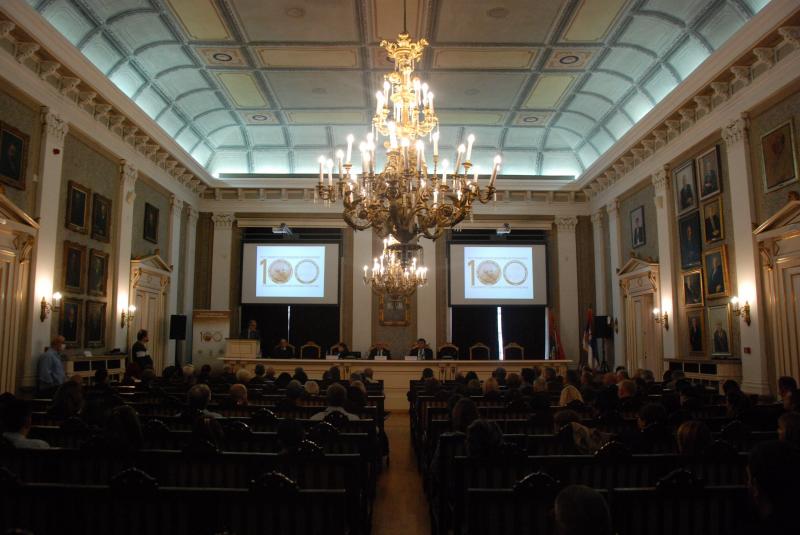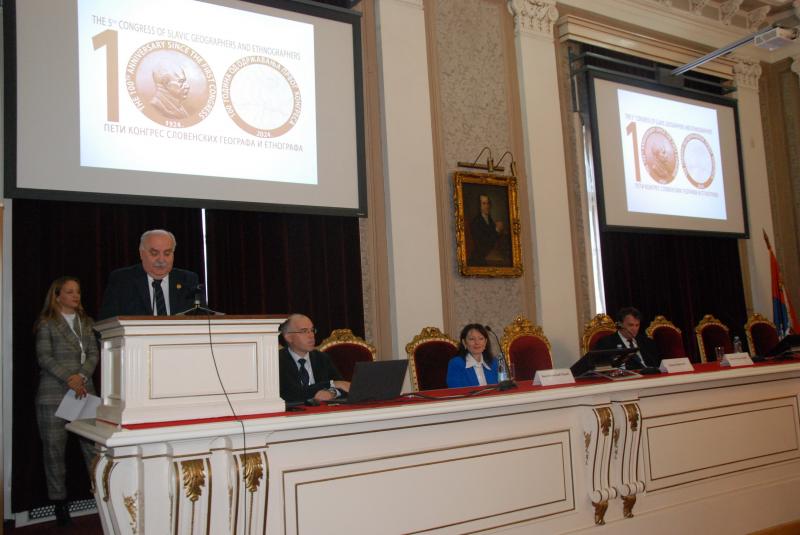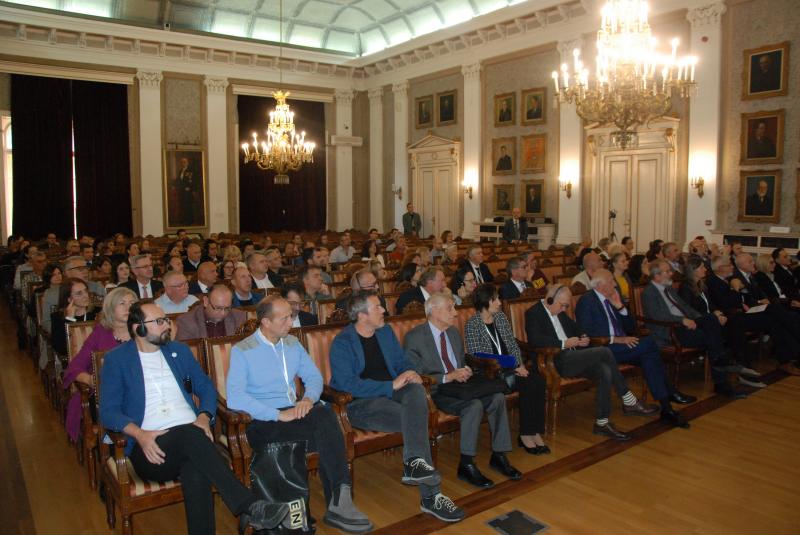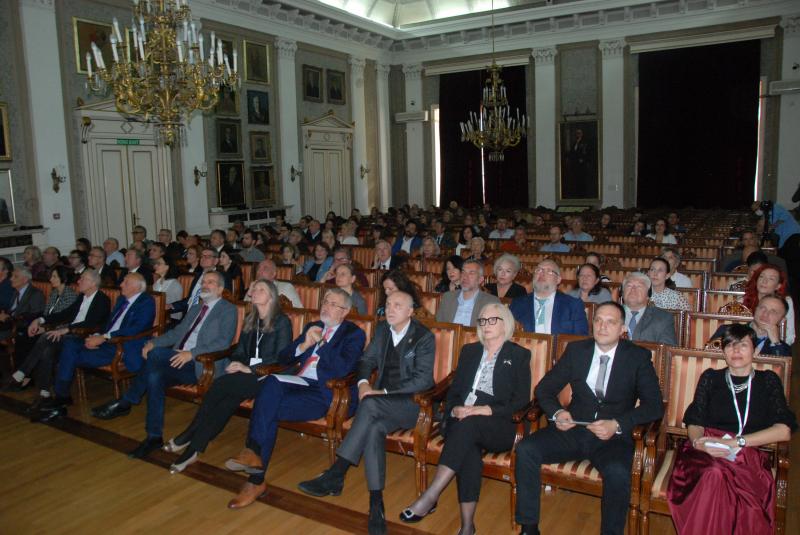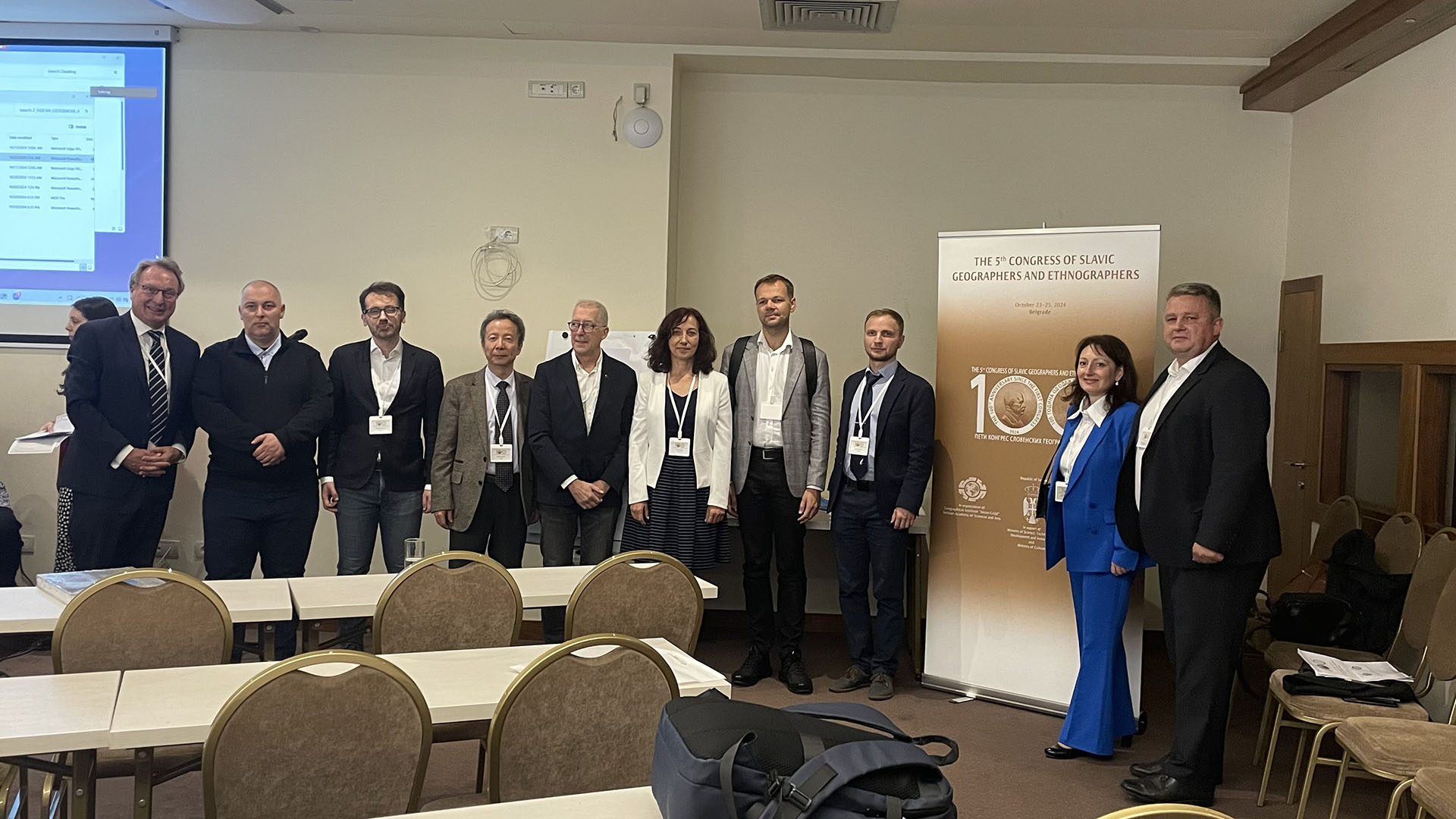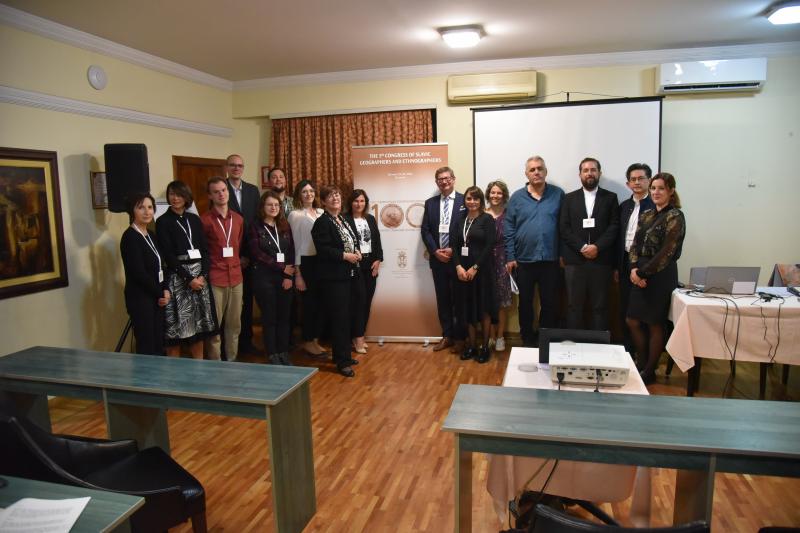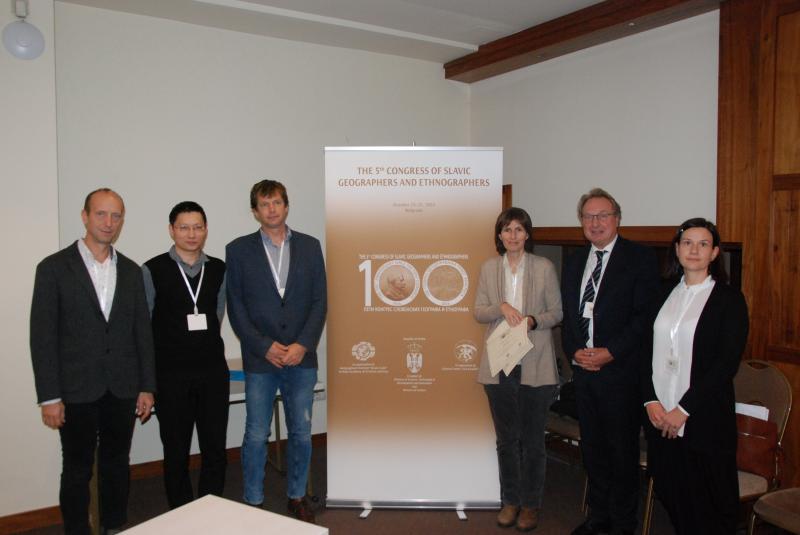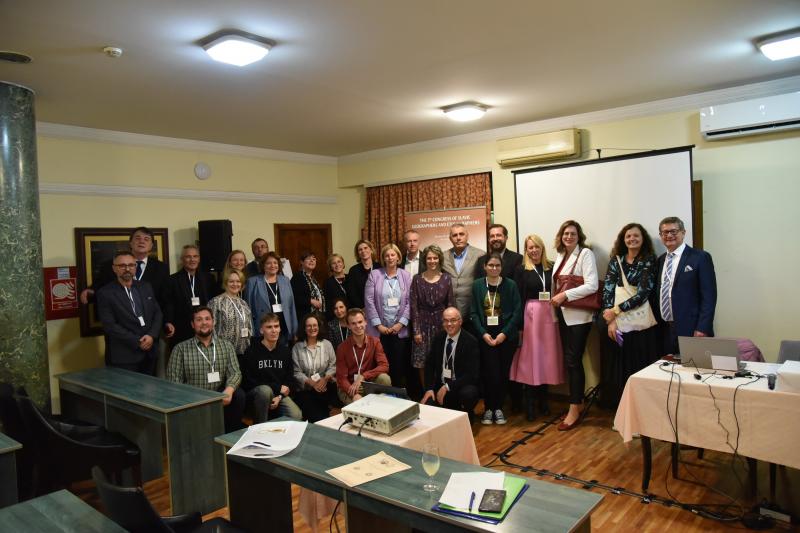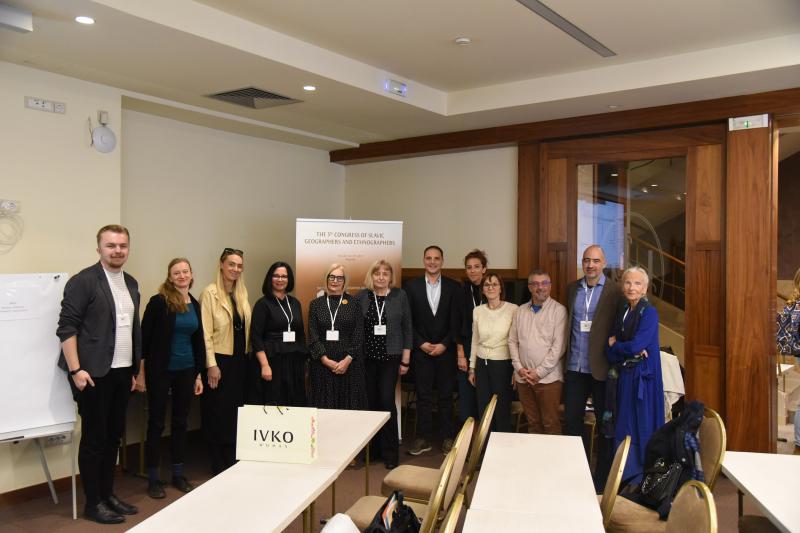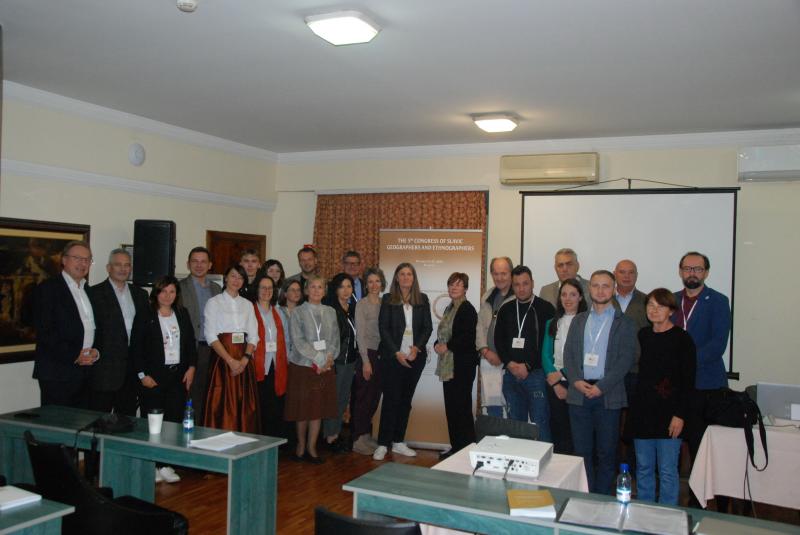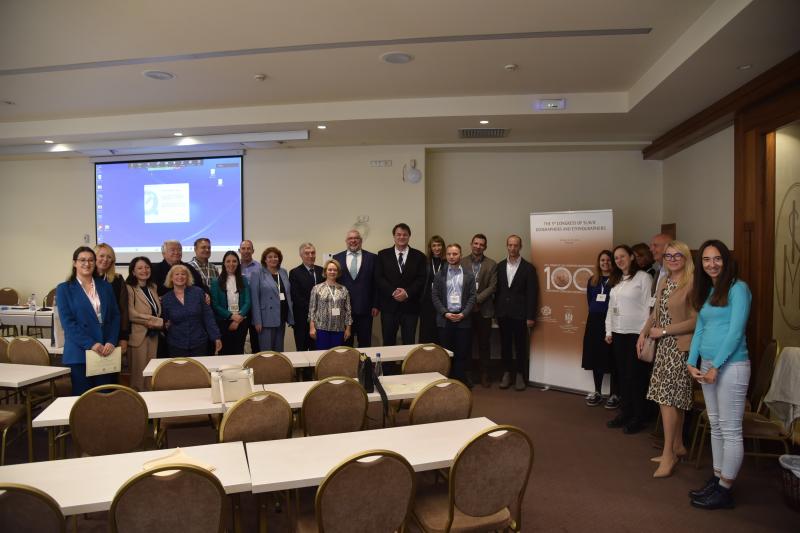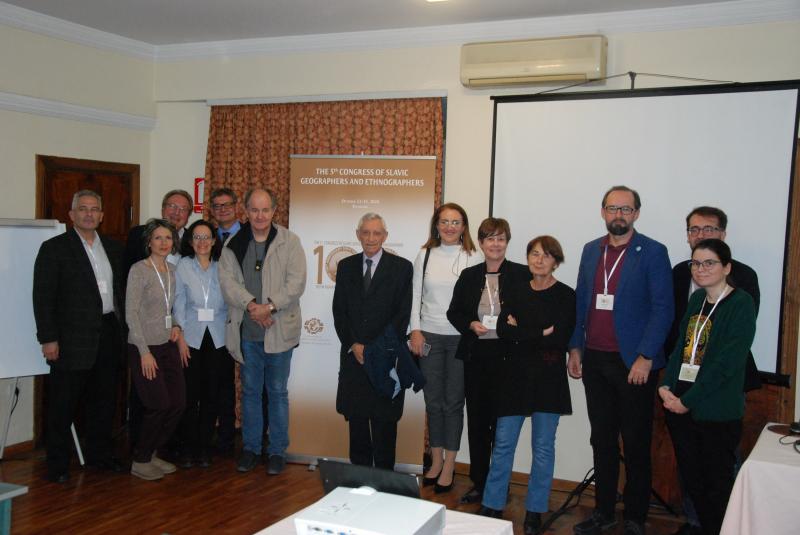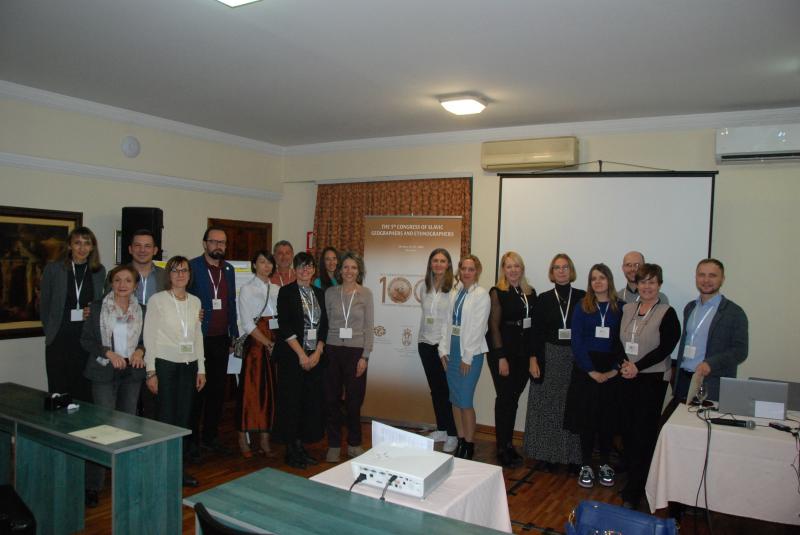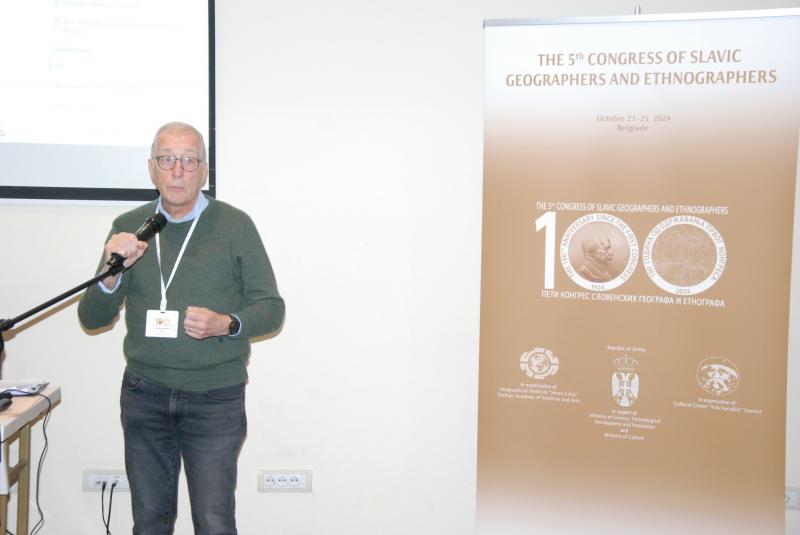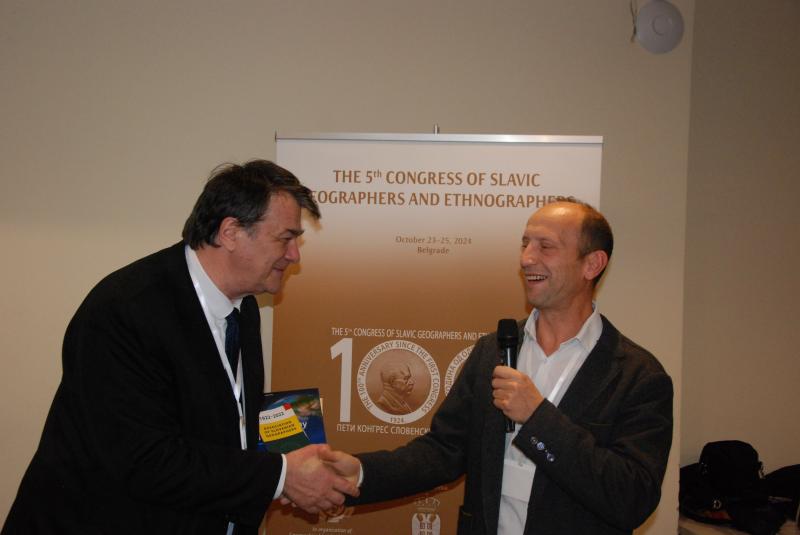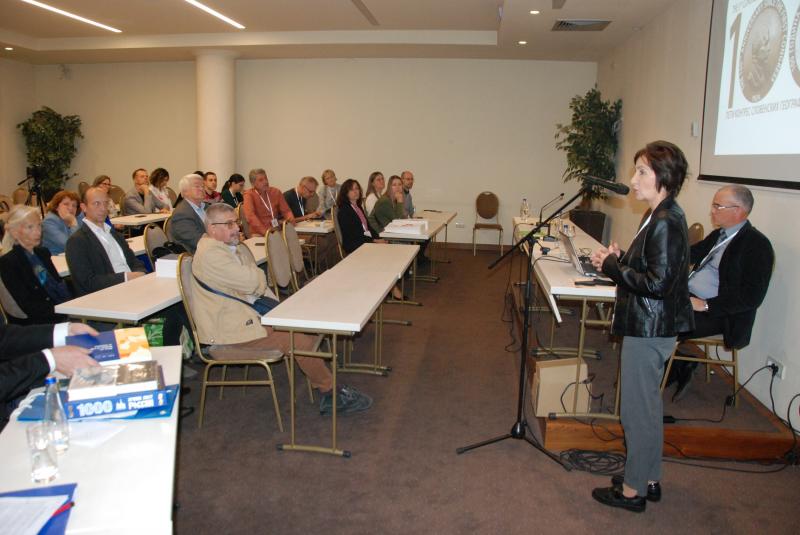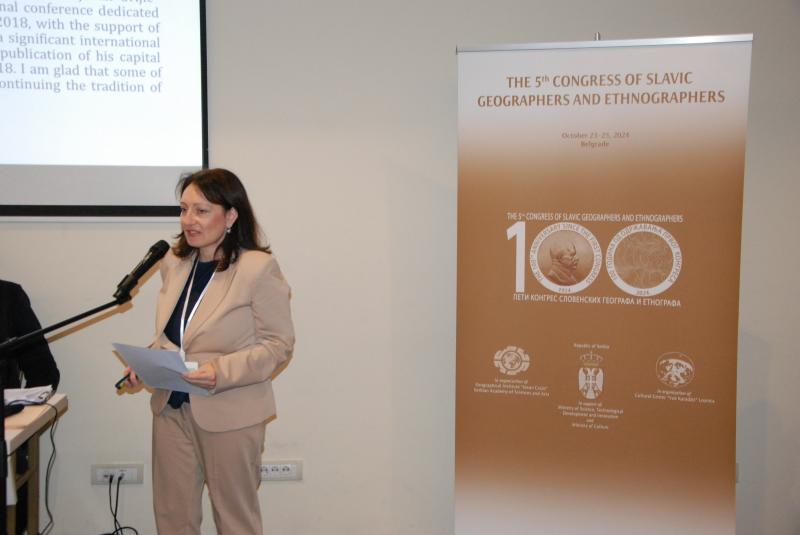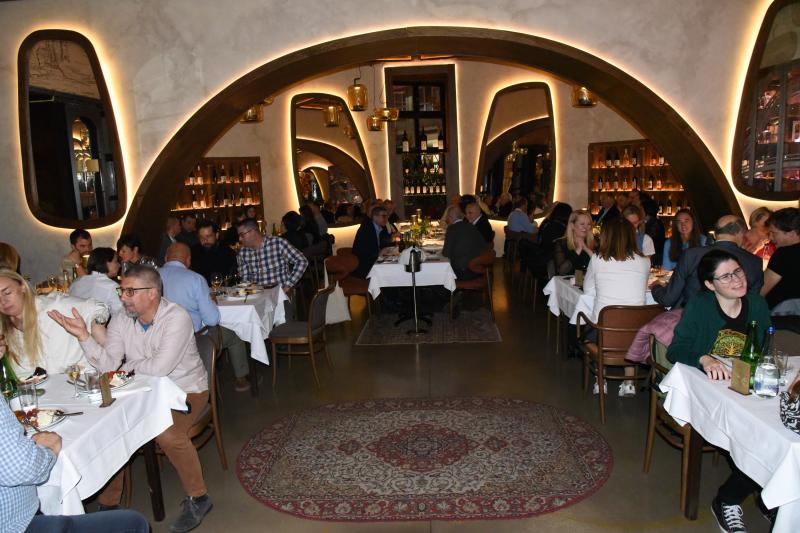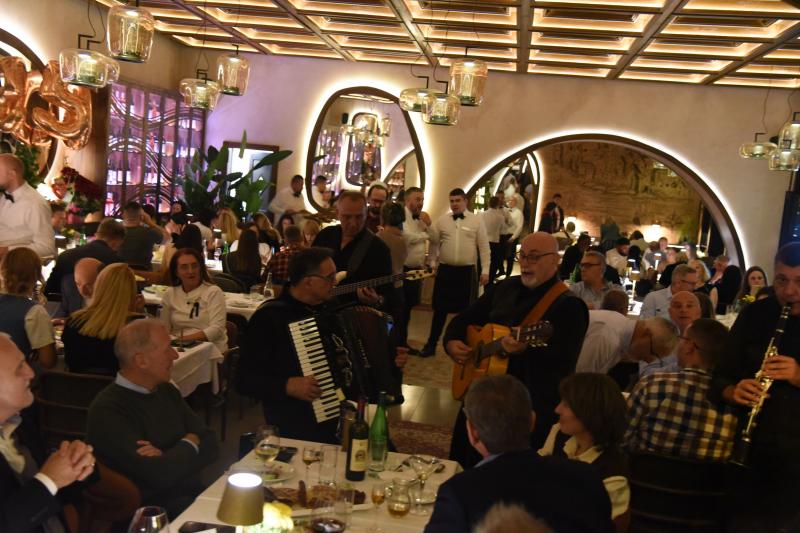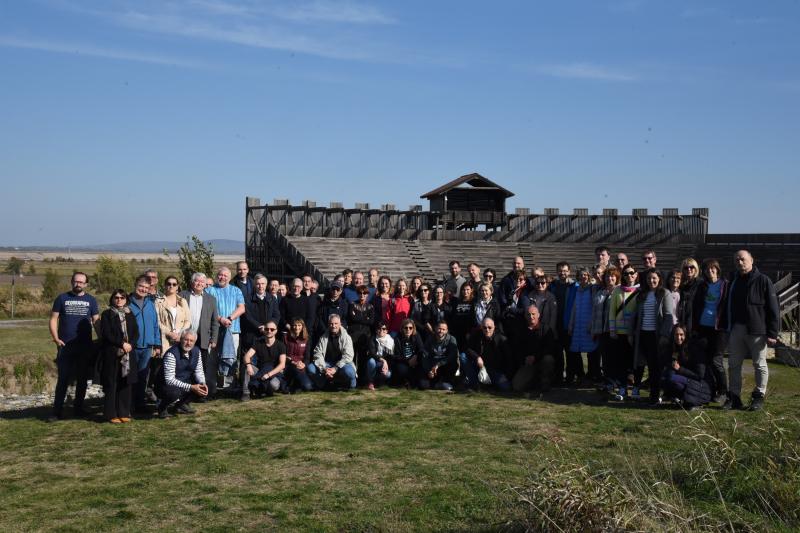Date: October 23, to October 25, 2024
Venue: Belgrade
Organisers: Geographical Institute "Jovan Cvijić" of the Serbian Academy of Sciences and Arts in cooperation with the Cultural Centre "Vuk Karadžić" Loznica
Sponsors: Ministry of Science, Technological Development and Innovation and Ministry of Culture of the Republic of Serbia
On the centenary of the first Congress in Prague, as well as 88 years after the last one in Sofia, the 5th Congress of Slavic Geographers and Ethnographers was held from October 23 to 25 in Belgrade (Republic of Serbia). It was organized at the initiative of the Geographical Institute "Jovan Cvijić" of the Serbian Academy of Sciences and Arts (SASA) in cooperation with the Cultural Centre "Vuk Karadžić", Loznica, with the support of the Ministry of Science, Technological Development and Innovation and the Ministry of Culture of the Republic of Serbia.
The opening ceremony was held at the Rectorate of the University of Belgrade in the presence of distinguished guests from the country and abroad. In addition to the host, Dr. Milan Radovanović, Director of the Geographical Institute "Jovan Cvijić" SASA, the gathering was also welcomed by Academician Zoran Knežević, President of the Serbian Academy of Sciences and Arts, Academician Milovan Pecelj, Member of the Academy of Sciences and Arts of the Republika Srpska, Dr. Vladimir Cvetković, Vice-Rector for Science of the University of Belgrade, Dr. Michael Meadows, former President of the International Geographical Union (IGU), Dr. Rafael de Miguel Gonzalez, President of the European Association of Geographers (EUROGEO), Dr. Massimiliano Tabuzzi, Secretary General of the Association of European Geographical Societies (EUGEO), and Dr. Branko Banović, Director of the Institute of Ethnography SASA.
In the first two working days, 90 scientists from 17 countries (mostly Slavic) participated in the Congress. Also, in addition to representatives of international geographical organizations, representatives of nations, i.e., institutions with which Jovan Cvijić had intensive cooperation at various stages, participated in the working part: Charles University and Vienna University (Austrian Academy of Sciences), Sorbonne and the University of Neuchatel. Taking into account the importance of the People's Republic of China in the field of geographical research, including the "Belt and Road" initiative, as well as long-standing cooperation, colleagues from the Institute of Geographic Sciences and Natural Resources Research of the Chinese Academy of Sciences also attended.
In order to maintain the structure of the previous Congresses while respecting modern achievements in the aforementioned disciplines, nine sessions were conceived. These were: 1) physical-geographical processes and their effects on the population; 2) contemporary theoretical and methodological approaches in geography; 3) environmental protection; 4) population geography; 5) economic development perspectives and their impact on the population; 6) spatial planning; 7) historical geography; 8) political geography; and 9) ethnology. In the Book of Abstracts and Contributed Papers, 101 presentations were published on over 400 pages. Of these, 81 abstracts and 20 papers, with a total of 176 authors and co-authors, from 47 different institutions.
At the end of the first day of the Congress, a "Forum" was held, where the funding program was promoted, and information was provided regarding applications for ERC grants in all scientific fields, including geography. Also, the international cooperation and publishing activities of the Geographical Institute “Jovan Cvijić” SASA were presented.
The third (final) day was reserved for an expert excursion on the route Belgrade–Požarevac–Golubac–Veliko Gradište–Belgrade. The participants had the opportunity to get acquainted with the natural and cultural peculiarities of this part of Serbia. Special attention was paid to the visit to the Archaeological Site of Viminacium, the former military headquarters and capital of the Roman province of Upper Moesia, one of the most significant and richest archaeological sites from the Roman period in Serbia. Continuing the journey, entering Djerdap National Park (Djerdap Gorge), the participants first became acquainted with the characteristics of this part of the Danube River. A visit to the Golubac Fortress, a medieval cultural monument of exceptional importance, was organized. The tour ended with an informal gathering at Srebrno Jezero (Silver Lake), a river branch on the right bank of the Danube.
Celebrating the aforementioned jubilees with the presence of numerous participants was an exceptional honor for the Geographical Institute team. This event provides an incentive for the geographical and ethnographic scientific community to continue the path of our illustrious ancestors. Undoubtedly, we have a thorny road ahead of us. Still, as expected from the Institute that bears Cvijić's name, we are ready to take on this challenging but significant responsibility.
Once again, we would like to thank all our colleagues who participated in the work of the 5th Congress of Slavic Geographers and Ethnographers.
The team of the Geographical Institute "Jovan Cvijić" of the Serbian Academy of Sciences
Book of Abstracts and Contributed Papers




